This post will show some more photographs taken during our recent visit to Goose Pond in Indiana.
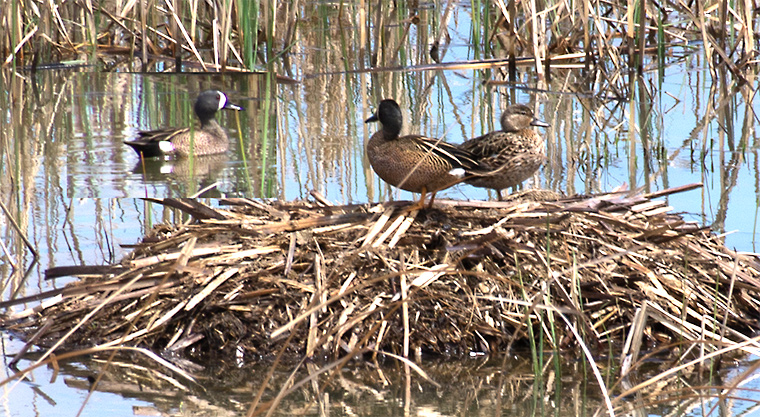
In this photograph a pair of Bluewinged Teal (Spatula discors) are sitting on top of a muskrat pushup. The male Teal seems to be eyeing another male that is swimming past.
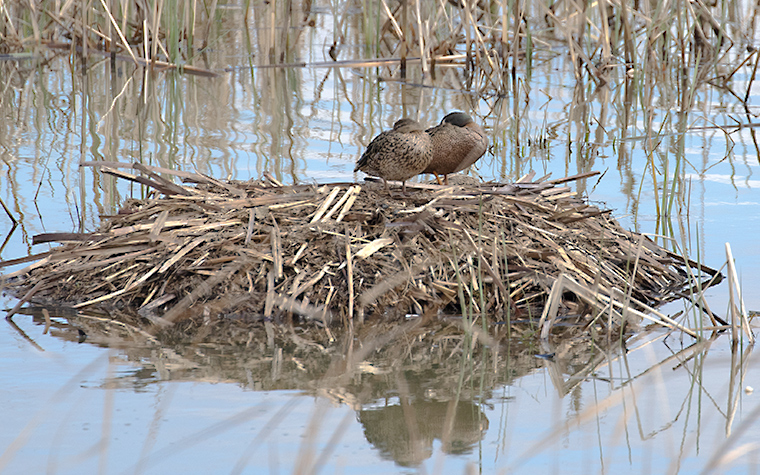
Apparently the threat of the possibly competing male has passed and the pair have settled down for a nap.
Muskrats (Ondatra zibethicus) will make their homes by burrowing under a bank if that sort of habitat is available. In wetlands such as those at Goose Pond where no steep banks are available, muskrats construct piles of vegetation with cavities inside where they can shelter. The structures are sometimes called “pushups” and sometimes “lodges”. They are typically made entirely of herbaceous vegetation, and do not contain woody material such as beavers (Castor canadensis) use to construct their lodges. Indeed, if food becomes scarce, muskrats are known to eat away at their pushups from the inside.
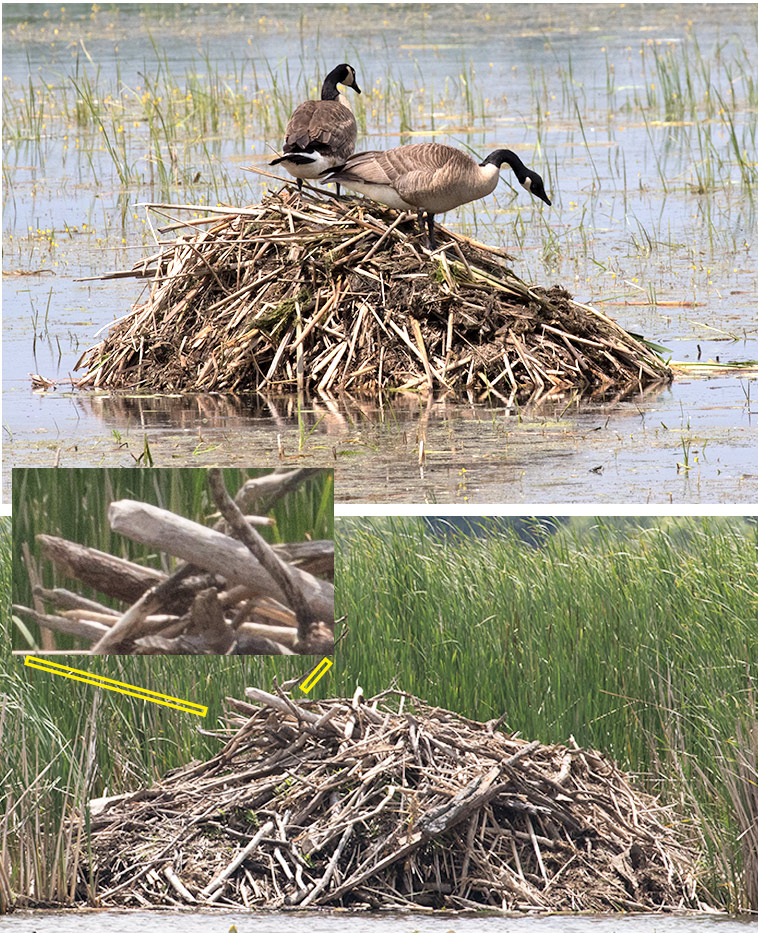
The photographs above show a comparison between a muskrat pushup (with the geese on top) and a beaver lodge. Note that the beaver lodge is constructed of woody material. The magnified insert shows branches at the top of the beaver lodge. It is apparent that this structure is composed of small logs and twigs with the characteristic chewing marks made by the beavers.
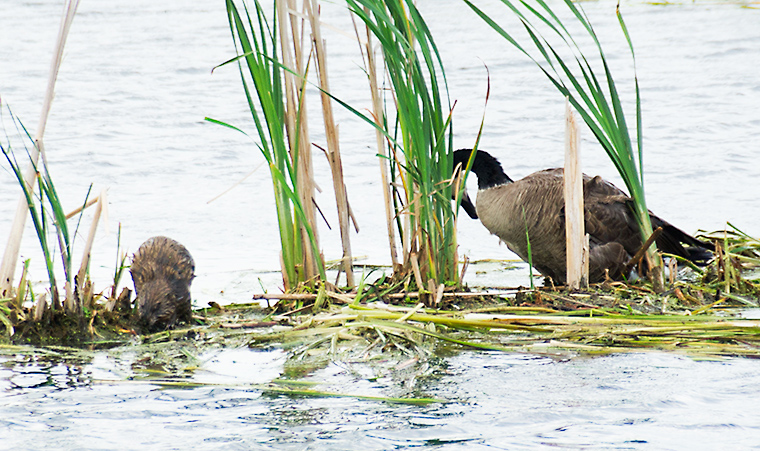
We did not see any of the muskrats at Goose Pond, so I will show some in photographs we took at Horicon Marsh in Wisconsin a couple of years ago. The photograph above is included to provide an idea of the size of a muskrat compared to a Canada Goose (Branta canadensis), which I hope will be familiar to most readers.
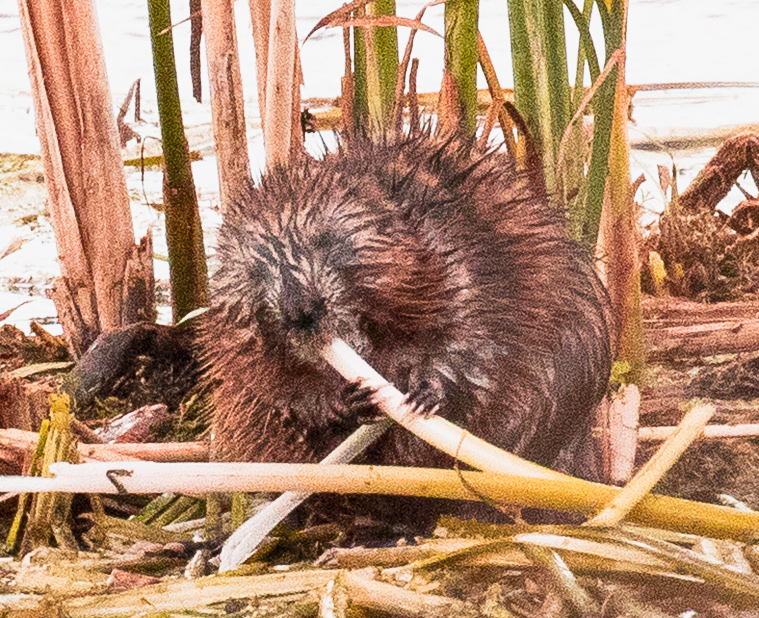
Here is a closer view of a muskrat eating the base of a cattail plant. Muskrats are almost exclusively vegetarian.
Muskrats have a luxuriant fur that is in two layers, and it keeps them waterproofed. It was formerly widely used in the U.S., where it was marketed as “Hudson Seal”. I guess no one wanted a coat made of “muskrat” fur.
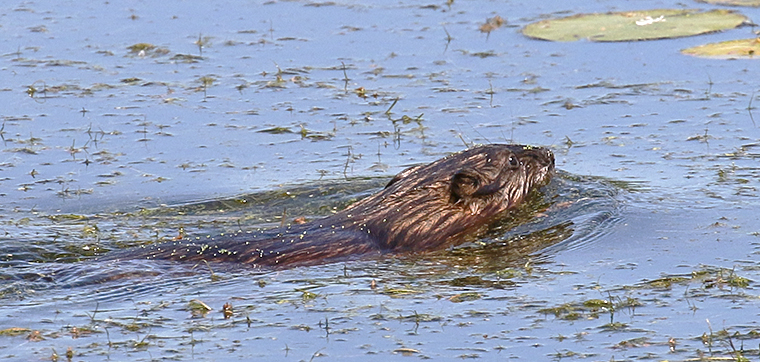
Muskrats are quite at home in the water. They can stay submerged for several minutes.
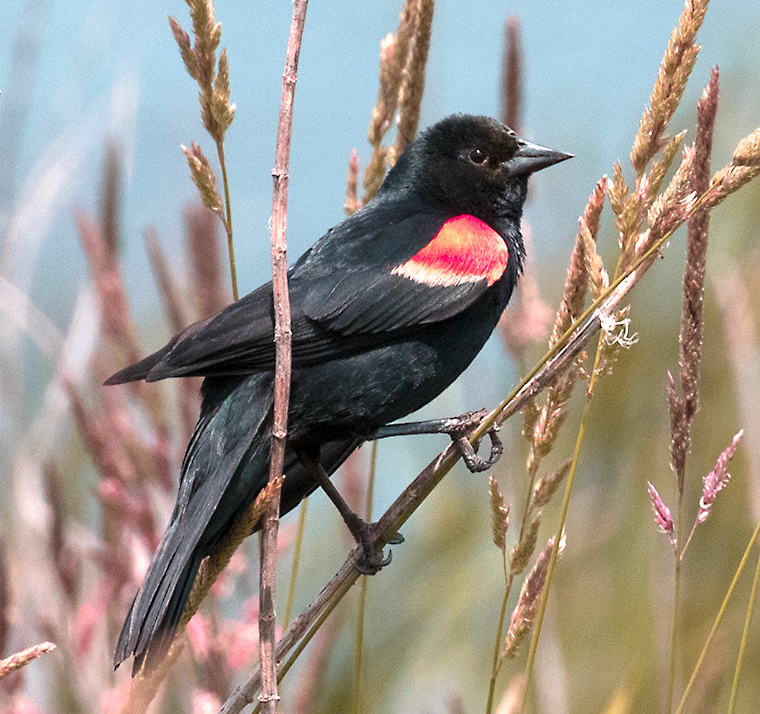
Of course we saw other things in addition to muskrats and waterfowl. There were lots of Red-winged Blackbirds (Agelaius phoeniceus). I hope we get a chance to come back in March or April, which should be peak season for migrating waterfowl.
